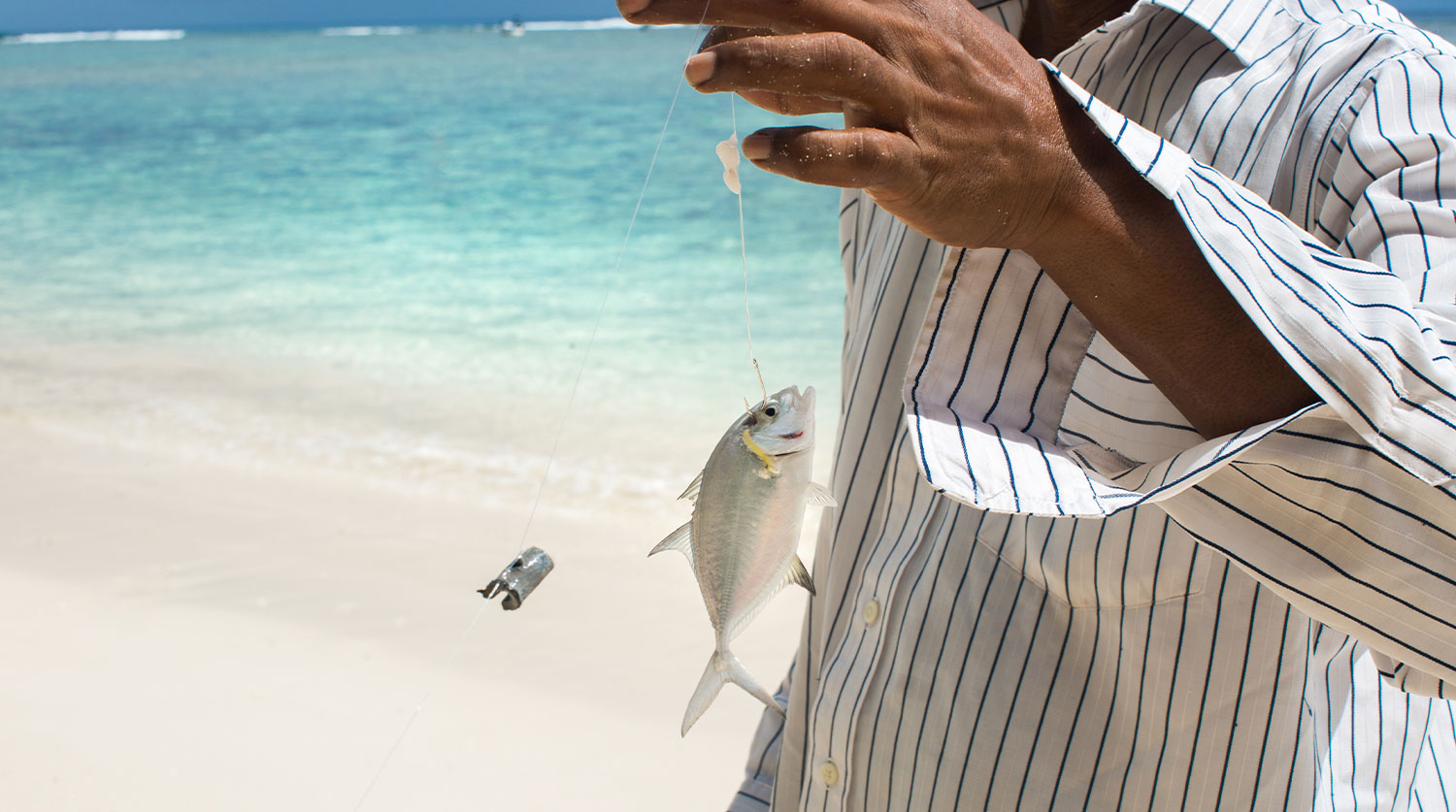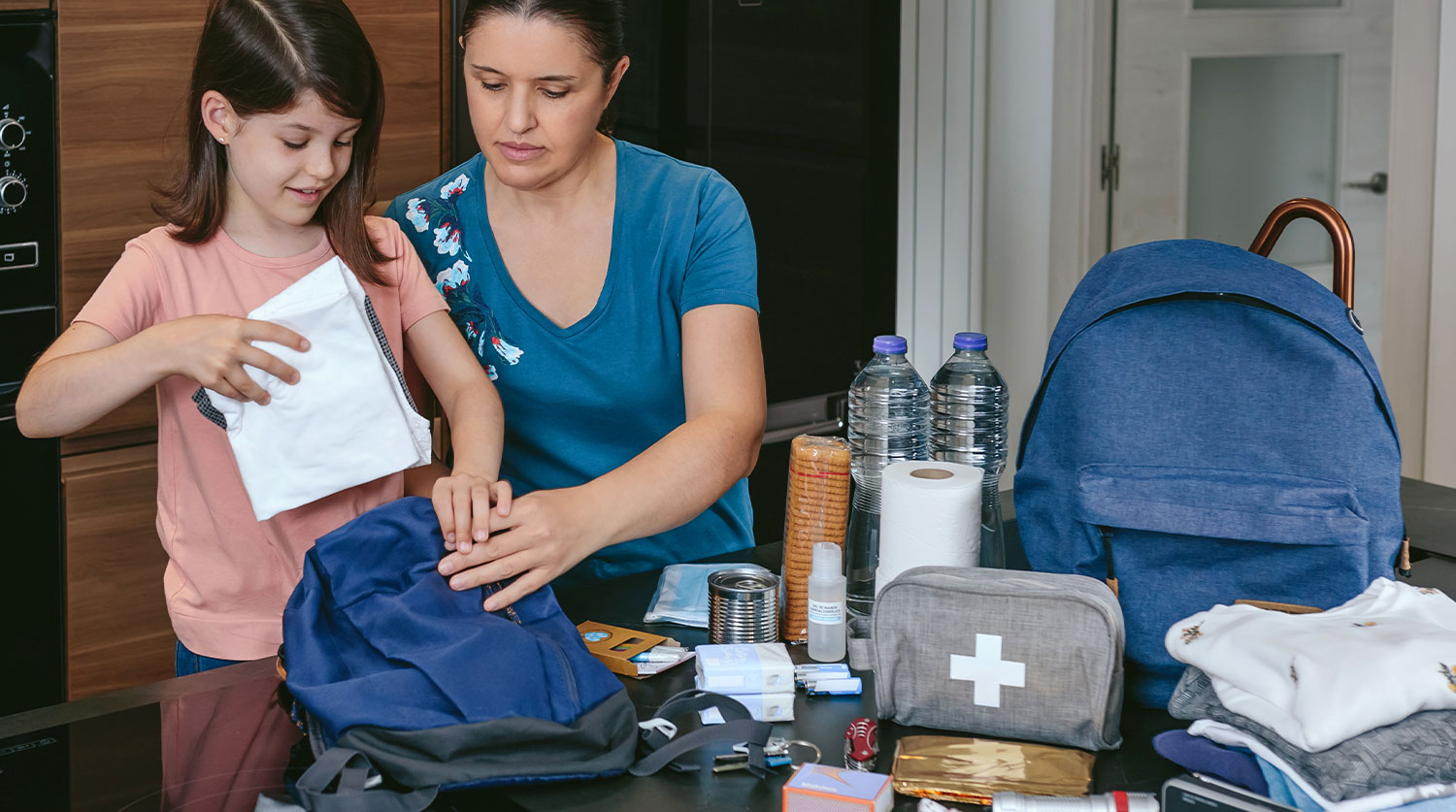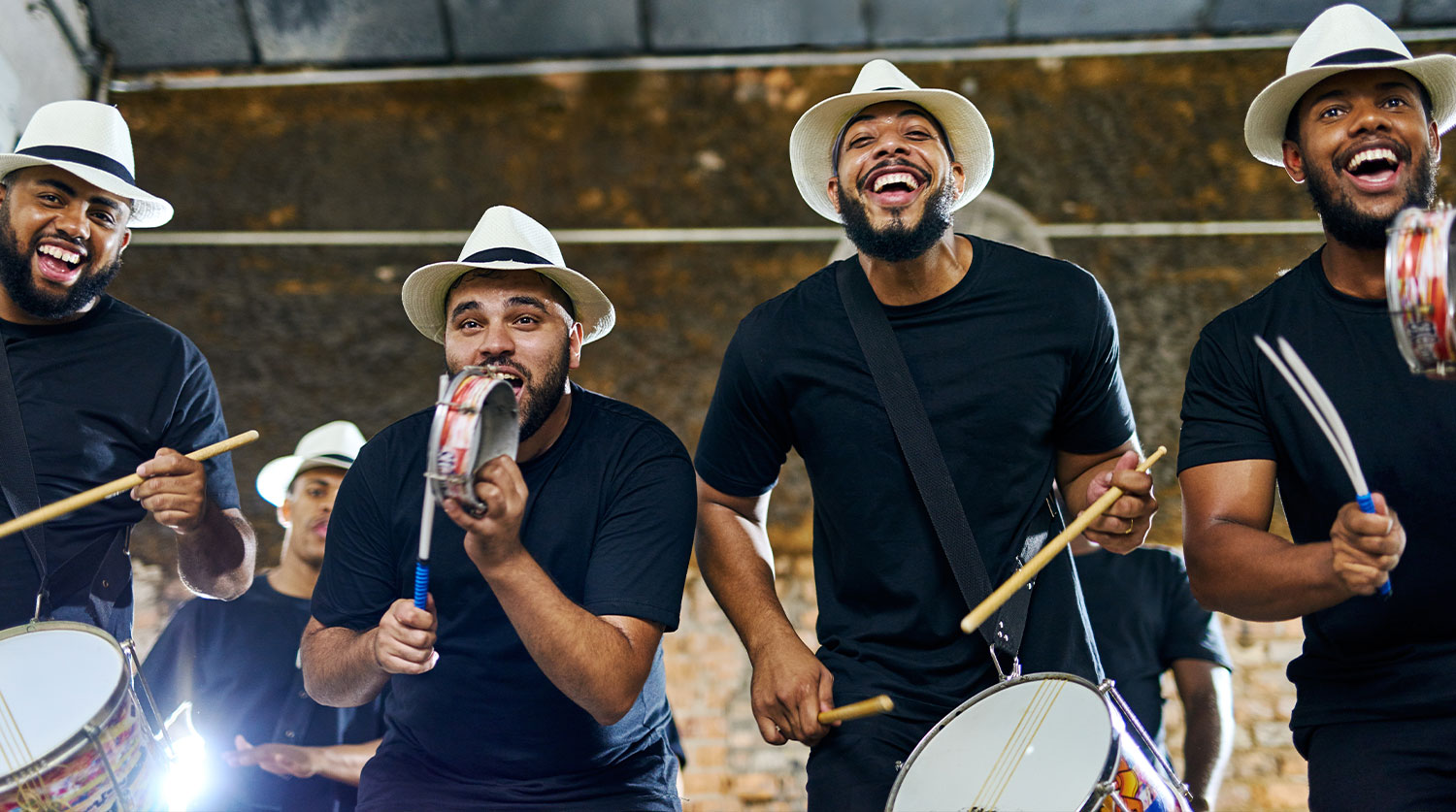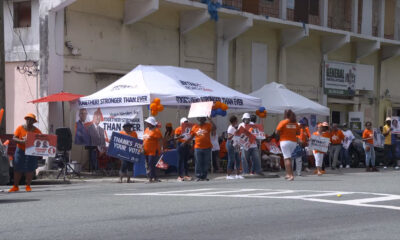Uncategorized
Five Destinations for U.S. Virgin Islands Residents Seeking a Change of Scenery

Living in the U.S. Virgin Islands offers stunning beaches, warm weather, and a tranquil lifestyle. However, even paradise can feel confining at times, prompting residents to seek new adventures. For those looking to “get off the rock,” here are five vacation destinations that promise a refreshing change of pace.
1. New York City, New York
A stark contrast to the serene beaches of the Virgin Islands, New York City is a bustling metropolis that never sleeps. From the iconic Statue of Liberty and Central Park to the cultural hotspots of Broadway and the Metropolitan Museum of Art, the city offers a plethora of activities. The vibrant food scene, shopping on Fifth Avenue, and the electric energy of Times Square provide an exhilarating urban escape.
New York’s diverse neighborhoods, such as the artsy SoHo, historic Greenwich Village, and trendy Williamsburg in Brooklyn, offer distinct experiences. For sports enthusiasts, catching a game at Yankee Stadium or Madison Square Garden is a must. Additionally, seasonal events like the Macy’s Thanksgiving Day Parade and the Rockefeller Center Christmas Tree lighting add to the city’s allure.

2. Vancouver, Canada
For a mix of outdoor adventure and urban sophistication, Vancouver is an ideal choice. Nestled between the Pacific Ocean and the Coast Mountains, Vancouver boasts scenic beauty and diverse cultural experiences. Visitors can explore Stanley Park, ski in Whistler, or stroll through Granville Island’s public market. The city’s eco-friendly initiatives and multicultural cuisine are also major draws.
Vancouver’s neighborhoods each have their own unique charm. Gastown, with its cobblestone streets and historic steam clock, offers a glimpse into the city’s past, while Yaletown’s trendy boutiques and waterfront dining provide a modern contrast. The city’s commitment to sustainability is evident in its extensive network of bike paths and green spaces, making it easy for visitors to enjoy nature without leaving the urban environment.

3. Tokyo, Japan
Tokyo offers a unique blend of traditional culture and cutting-edge technology. Residents of the Virgin Islands will find a world of difference in Japan’s capital. Highlights include the historic Asakusa district, the bustling Shibuya Crossing, and the serene Meiji Shrine. Food enthusiasts can indulge in sushi, ramen, and other Japanese delicacies. Tokyo’s efficient public transportation makes exploring the city easy and enjoyable.
Beyond the well-known attractions, Tokyo’s neighborhoods each offer their own distinct experiences. Harajuku is famous for its eclectic fashion and quirky shops, while Ginza is the epitome of luxury shopping and fine dining. For a peaceful retreat, the gardens of the Imperial Palace or a visit to the traditional tea houses in Hamarikyu Gardens provide a tranquil escape from the city’s hustle and bustle.

4. Barcelona, Spain
Barcelona, with its stunning architecture, Mediterranean beaches, and vibrant nightlife, is a captivating destination. Gaudí’s masterpieces, such as the Sagrada Família and Park Güell, showcase the city’s artistic flair. The bustling La Rambla, historic Gothic Quarter, and tapas bars offer endless exploration opportunities. Barcelona’s blend of old-world charm and modern living makes it a perfect getaway.
Barcelona’s beaches, such as Barceloneta and Bogatell, offer a relaxing contrast to the city’s cultural sights. For sports fans, a visit to Camp Nou, home of FC Barcelona, is a thrilling experience. The city’s calendar is filled with festivals, from the colorful La Mercè to the traditional Castellers human towers, providing visitors with a taste of local culture and traditions.
5. Cape Town, South Africa
For an adventure-filled vacation, Cape Town is an exceptional choice. The city is known for its dramatic landscapes, including Table Mountain and the Cape of Good Hope. Residents of the Virgin Islands can enjoy safaris in nearby game reserves, explore the vibrant V&A Waterfront, and visit Robben Island. The diverse culinary scene and rich history further enhance Cape Town’s appeal.
Cape Town’s neighborhoods offer a rich tapestry of experiences. The Bo-Kaap, with its brightly colored houses and rich Cape Malay heritage, is a visual and cultural delight. The Constantia Wine Route, home to some of South Africa’s oldest vineyards, offers wine enthusiasts a chance to taste world-class wines amidst stunning scenery. For adventure seekers, activities such as shark cage diving, paragliding, and hiking up Lion’s Head provide an adrenaline rush.
These five destinations offer a variety of experiences, from urban adventures and cultural explorations to outdoor escapades. For residents of the U.S. Virgin Islands looking to broaden their horizons, these spots provide the perfect opportunity to “get off the rock” and immerse themselves in new and exciting environments. Each destination brings its own unique charm, ensuring that there is something for everyone, whether it’s the vibrant energy of New York City, the natural beauty of Vancouver, the cultural richness of Tokyo, the artistic flair of Barcelona, or the adventurous spirit of Cape Town.
Uncategorized
The Future of Sustainable Fishing in the Virgin Islands

Sustainable fishing practices are increasingly becoming a focal point in the Virgin Islands, as the region works to balance the economic importance of its fisheries with the need to preserve marine ecosystems. With the ocean playing a critical role in both the livelihoods of local fishermen and the health of the islands’ biodiversity, sustainable fishing is seen as the way forward to ensure long-term environmental and economic stability.
The Importance of Fisheries to the Virgin Islands Economy
Fishing has long been an essential part of the Virgin Islands’ culture and economy. Local fishermen rely on the ocean for their livelihoods, providing fresh seafood to restaurants, markets, and hotels. Tourism, which is the backbone of the Virgin Islands economy, also benefits from a thriving fishing industry, as many tourists are drawn to the islands’ rich marine life and the promise of fresh, locally sourced seafood.
However, overfishing and the use of unsustainable practices have put increasing pressure on fish populations in the region. Species such as grouper, snapper, and lobster are showing signs of decline, raising concerns among environmentalists and policymakers alike. These issues make it clear that new, more sustainable methods of fishing must be implemented to protect both the environment and the local economy.
Current Efforts Toward Sustainability
In recent years, the Virgin Islands government, along with various environmental organizations, has taken significant steps to promote sustainable fishing. Regulations such as catch limits, seasonal closures, and gear restrictions have been introduced to help mitigate overfishing. For instance, the Virgin Islands has established protected areas known as Marine Protected Areas (MPAs), where fishing is either restricted or entirely prohibited, allowing fish populations to recover and ecosystems to thrive.
Additionally, the introduction of sustainable fishing education programs for local fishermen has been crucial. These programs emphasize the importance of selective fishing methods, which target specific species without harming others, as well as the use of non-destructive gear that minimizes damage to the marine environment. Fishermen who adopt these practices not only contribute to conservation efforts but also benefit from more abundant fish stocks in the long run.
The Role of Technology in Sustainable Fishing
Technology is also playing an important role in shaping the future of sustainable fishing in the Virgin Islands. Tools like GPS tracking, electronic logbooks, and advanced sonar systems allow fishermen to better track fish populations and avoid overfishing specific areas. This data-driven approach helps ensure that fishing efforts are sustainable, protecting the species most at risk while maximizing the efficiency of the catch.
Moreover, technology is enabling more effective monitoring and enforcement of fishing regulations. Drones and satellite technology are now being used to patrol the waters and ensure compliance with protected area restrictions, reducing illegal fishing activities that threaten marine ecosystems.
Community Involvement and Education
Sustainable fishing in the Virgin Islands cannot succeed without the support and active involvement of the local community. Educating both fishermen and the general public about the importance of sustainable practices is crucial. Public awareness campaigns highlighting the long-term benefits of conservation, such as increased fish stocks and healthier reefs, can encourage local support for stricter regulations.
Furthermore, the involvement of local schools and universities in marine conservation research fosters a greater understanding of the challenges facing the region’s fisheries. This collaboration ensures that the next generation of Virgin Islanders is equipped with the knowledge and tools needed to continue protecting their valuable marine resources.
The Path Forward
While the Virgin Islands has made significant progress toward sustainable fishing, there is still much work to be done. Strengthening partnerships between government agencies, environmental organizations, and the local fishing community will be key to ensuring the long-term success of these efforts. Continued investment in technology, stricter enforcement of regulations, and ongoing education programs are essential components of this future.
Moreover, as climate change continues to impact ocean ecosystems, sustainable fishing practices must also adapt. Rising sea temperatures and ocean acidification are already affecting fish populations, and future sustainability efforts will need to take these environmental shifts into account.
In conclusion, the future of sustainable fishing in the Virgin Islands lies in a combination of regulation, education, technology, and community involvement. By prioritizing the health of marine ecosystems today, the Virgin Islands can ensure that its fishing industry remains viable and productive for generations to come. Sustainable fishing is not just an environmental necessity—it is also an economic imperative for the islands’ future.
Uncategorized
Emergency Weather Kits: What to Include

Living in the U.S. Virgin Islands means enjoying stunning views and tropical weather, but it also requires being prepared for the potential dangers posed by hurricanes and tropical storms. When disaster strikes, having an emergency weather kit on hand can make all the difference in keeping your family safe and comfortable. This guide will help you assemble a well-stocked emergency kit tailored for residents of the Virgin Islands, ensuring you’re ready for any severe weather event.
Why You Need an Emergency Weather Kit
Hurricane season in the Caribbean, which runs from June through November, often brings storms that can disrupt daily life, leaving residents without power, water, or access to stores for days, even weeks. In these situations, an emergency weather kit becomes your lifeline. It provides essential supplies that help you survive until normal conditions return.
The key to an effective emergency kit is proper planning and preparation. Start building your kit now, so when the next storm approaches, you’ll be ready.
Essential Items to Include in Your Emergency Weather Kit
- Water
Clean drinking water is critical during emergencies. Plan for at least one gallon of water per person, per day, for at least five to seven days. Water is not only needed for drinking but also for sanitation and hygiene. - Non-Perishable Food
Stock up on enough non-perishable food for at least one week. Consider items like canned goods, dry cereals, peanut butter, granola bars, and high-energy snacks. Don’t forget a manual can opener to access your canned goods easily. For infants, ensure you have enough formula or baby food. - First-Aid Kit
A fully stocked first-aid kit is vital during emergencies, especially if medical help is delayed. Include bandages, antiseptics, scissors, tweezers, pain relievers, and any prescription medications your family may require. - Flashlights and Batteries
Power outages are common during storms. Keep a good supply of flashlights and extra batteries in your kit. Avoid candles as they pose a fire hazard, especially in stormy conditions. - Portable Radio
A battery-powered or hand-crank radio is essential for receiving important updates during an emergency, including weather alerts and evacuation orders. NOAA weather radios are designed to receive specific storm alerts and are a good investment for island residents. - Emergency Tools
Include basic tools like a wrench or pliers to turn off utilities, such as water or gas, in case of a leak. Multi-tools are also useful in emergencies due to their versatility. - Personal Hygiene Items
Maintaining hygiene is crucial during long power outages. Stock up on items like soap, hand sanitizer, moist towelettes, toilet paper, and garbage bags for sanitation purposes. - Clothing and Bedding
Include sturdy clothing, rain gear, and sturdy shoes for each family member. Also, pack blankets, sleeping bags, or extra bedding to stay warm in case the weather turns cooler. - Important Documents
Keep copies of important documents like passports, birth certificates, insurance policies, and medical records in a waterproof container. These documents may be needed during or after an emergency, especially if you need to evacuate or apply for aid. - Cash
ATMs may not be operational during power outages, so it’s smart to have small bills on hand to purchase essential items once the storm passes. - Special Needs Supplies
If you or a family member has special needs, such as mobility challenges or requires medical devices, make sure your kit includes appropriate supplies and backups, like extra hearing aid batteries, medications, or medical devices. - Pet Care Items
Don’t forget your pets! Stock food, water, and any medications your pets may need. You’ll also need items like a leash, collar, pet carrier, and sanitation materials.
Additional Recommendations for U.S. Virgin Islands Residents
Being on an island, the risk of supply chain disruptions is higher after a storm, so over-prepare where possible. Additionally, you may want to consider adding tarps, ropes, and plywood to your emergency kit to help secure your home if damage occurs during the storm. Have a plan in place for protecting windows and doors in the lead-up to a hurricane.
Emergency Weather Kit Storage Tips
Keep your emergency kit in a designated area that is easily accessible in case of a sudden evacuation. If possible, store items in airtight plastic bins to protect them from water damage. Review and update your kit regularly, checking expiration dates on food, batteries, and medications at least once a year.
Be Prepared Year-Round
Storm preparedness isn’t just for hurricane season—having an emergency weather kit ready year-round ensures you’re equipped for any disaster, from earthquakes to extended power outages. Begin building your kit today and stay vigilant about updates and improvements to it. Your safety and the safety of your family depend on your preparation.
As residents of the U.S. Virgin Islands, it’s important to be proactive in preparing for weather-related emergencies. A well-stocked emergency kit can provide peace of mind and help you navigate the aftermath of a storm. With careful planning and the right supplies, you’ll be ready to face any challenge Mother Nature brings.
By following these guidelines, you’ll not only protect your family but also contribute to a more resilient community.
Uncategorized
Exploring USVI’s Folk Music Traditions

The U.S. Virgin Islands boasts a rich tapestry of cultural heritage, and at the heart of this vibrant culture lies its folk music traditions. Deeply rooted in African, European, and Caribbean influences, the folk music of the USVI offers a compelling glimpse into the islands’ history, community life, and spiritual practices. From the rhythmic beats of the quelbe to the soul-stirring melodies of the bamboula, these musical traditions continue to resonate with both locals and visitors, offering a unique cultural experience that is both educational and entertaining.
Quelbe: The Heartbeat of the Virgin Islands
One of the most iconic forms of folk music in the USVI is quelbe, also known as “scratch band” music. This genre is recognized as the official music of the Virgin Islands and is characterized by its use of improvised instruments, such as gourds, washboards, and conch shells. The term “scratch band” refers to the way musicians often create rhythms by “scratching” or rubbing these instruments together.
Quelbe music emerged in the 17th and 18th centuries as a form of storytelling and social commentary. It was used by enslaved Africans to convey messages, share news, and express their emotions in a time when literacy was rare among the population. The lyrics of quelbe songs often touch on themes of love, hardship, resistance, and community, making them a powerful medium for preserving the history and values of the Virgin Islands.
Today, quelbe remains a vital part of the islands’ cultural identity. It is performed at festivals, parades, and community events, where both young and old can enjoy and participate in this lively tradition. The St. Croix-based band Stanley and the Ten Sleepless Knights is one of the most famous groups keeping the quelbe tradition alive, ensuring that this unique genre continues to thrive in modern times.
Bamboula: A Dance of Resilience
Another significant element of USVI’s folk music tradition is the bamboula, a drum-driven genre that is closely linked to African spiritual practices. The bamboula drum, made from the hollowed-out trunk of a tree and covered with goat skin, produces deep, resonant tones that are central to the music’s hypnotic rhythms.
Bamboula music is often accompanied by a dance of the same name, which features intricate footwork and expressive body movements. The dance was historically performed during celebrations, religious ceremonies, and times of resistance, serving as a powerful form of expression and communication among enslaved Africans. Today, bamboula is celebrated as a symbol of resilience and cultural pride, with performances often held during Emancipation Day celebrations and other cultural festivals across the Virgin Islands.
Cariso: The Oral Tradition
Cariso is another integral part of the Virgin Islands’ folk music landscape. This traditional form of call-and-response singing was used by enslaved Africans to pass down stories, legends, and moral lessons from one generation to the next. The lyrics of cariso songs are often laced with humor, satire, and social critique, providing insight into the daily lives and struggles of the people.
While cariso is less commonly performed today, it remains an important cultural artifact that is preserved through oral history and community events. Efforts to revive and document cariso are ongoing, with cultural organizations in the Virgin Islands working to ensure that this rich tradition is not lost to time.
Preserving and Promoting Folk Music in the USVI
The preservation and promotion of folk music traditions in the USVI are crucial for maintaining the islands’ cultural heritage. Organizations such as the Virgin Islands Council on the Arts and the Smithsonian Folklife Festival have played significant roles in documenting and sharing these musical traditions with wider audiences. Local schools also incorporate folk music into their curricula, teaching younger generations about the importance of these cultural expressions.
In recent years, there has been a resurgence of interest in USVI folk music, driven by both local musicians and international collaborations. Festivals like the St. Thomas Carnival and the St. Croix Christmas Festival often feature performances of quelbe, bamboula, and cariso, allowing visitors to experience the rich musical heritage of the islands firsthand.
The folk music traditions of the U.S. Virgin Islands are more than just entertainment; they are a living testament to the resilience, creativity, and cultural richness of the islands’ people. Whether through the rhythmic storytelling of quelbe, the powerful drumming of bamboula, or the poignant lyrics of cariso, these musical forms continue to shape the cultural landscape of the USVI. By supporting and preserving these traditions, the Virgin Islands ensure that their unique cultural heritage remains vibrant for generations to come.
-

 Education1 year ago
Education1 year agoEducation Board Seeks Input on Schools Through Comprehensive Survey
-

 Education2 years ago
Education2 years agoCTE Board Enthusiastic About New Curriculum Standards, Yet Anxious Over Apprenticeship Support
-

 Crime2 years ago
Crime2 years agoRegistered Sex Offender Detained for Illegal Firearm Possession During Annual Surveillance Drive
-

 Videos3 years ago
Videos3 years ago2022 Gubernatorial Election: Voters Speak Out
-

 Development1 year ago
Development1 year agoCosts Surge as Donoe Estates Housing Project Resumes with New Contractor
-

 Videos3 years ago
Videos3 years agoGubernatorial Teams Celebrate St. Croix’s Bull & Bread Day
-

 Videos3 years ago
Videos3 years agoWakanda’s Female Might: A Dive into ‘Black Panther: Wakanda Forever’
-

 Crime2 years ago
Crime2 years agoSt. John’s Westin Resort Scene of Armed Robbery, Prompting Heightened Police Vigilance




